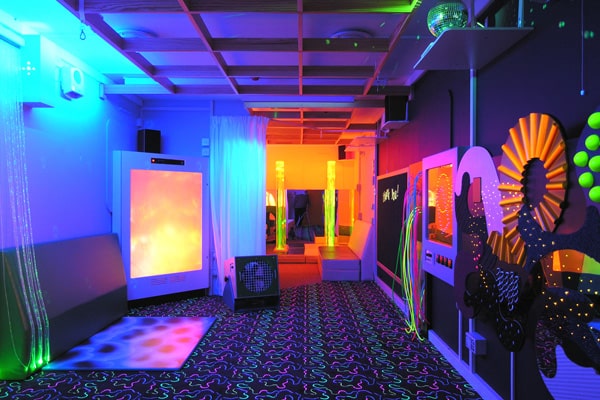Children are constantly exploring their environment, learning about the world around them through their senses. By ensuring that their sensory room design and installation in a way that is both comfortable and conducive to their exploration, you can help your child develop mentally and physically in the best possible way.
What is a Sensory Room?
A sensory room is a special area in your home designed specifically for children with special needs or who have autism or other disabilities. This space can provide a safe and calming environment where your child can explore their senses and feel comfortable and content.
There are many things to consider when designing a sensory room, including the size and layout of the space, the types of materials used, and the equipment that is available. Some key features to consider include:
• A variety of textures and surfaces: Sensory rooms should be stocked with plenty of soft fabrics, mats, blankets, pillows, etc. to provide plenty of surfaces for children to touch, feel, roll around on, and play with.
• Quiet spaces: It’s important to create quiet spaces where children can relax and focus on their senses. Try to avoid noisy areas such as open spaces with lots of furniture or areas with high ceilings. Instead, choose smaller spaces with low ceilings that allow sound waves to bounce around more easily.
• Areas for exploration: A sensory room should be filled with activities and objects that encourage exploration (such as mirrors, balls, tubes, ropes). These items should be placed in close proximity so children can touch them up close or move them around freely.
• Areas for relaxation: A sensory room should also offer areas where children can rest and relax their minds (such as a spa tub filled with warm water).
Types of Sensory Rooms
There are a variety of ways to design and install a sensory room that is perfect for your child. If you’re unsure of what type of sensory room would best suit your child, here are a few tips:
1. Choose the right type of sensory room. There are several different types of sensory rooms available on the market, each with its own unique benefits. These include restricted or unrestricted zones, sandboxes, large-scale play areas, multi-sensory play spaces and vortexes.
2. Restrict or unbind zones. If you want to limit your child’s exposure to specific types of stimuli, create restricted or unbind zones in their sensory room. This can be done by using dividers or walls to create discrete sections, or by installing gates that open and close.
3. Use large-scale play areas. If your child loves spending time playing outdoors but finds smaller play areas too stimulating, try using a large-scale play area instead. These usually feature lots of soft materials and plenty of space for your child to explore.
4. Install multi-sensory devices. If you want to add more than one type of stimulus into your son’s sensory room, install multi-sensory devices like touch screens and sound machines. This will help him explore all his senses at once!
Tips for designing and installing your own sensory room
There are plenty of ways to design and install a sensory room that’s perfect for your child, but there are a few tips you should keep in mind. First, it’s important to determine what your child needs and wants in a sensory room. Is your child primarily interested in sensory stimulation through touch, sound, movement, or all of the above? Once you know what your child is looking for, it’s time to start shopping for supplies.
To create an optimal sensory environment, it’s important to choose the right type of materials and textures. Soft materials like plush fabrics and down pillows are great for comforting children during sessions. Add some fun textures like sandpaper or wooden shavings to add some excitement. Another key factor is light and sound. Make sure the lighting is subdued enough so as not to overwhelm children, but bright enough so they can see what’s going on. And if you’re installing sound panels or layers of soundproofing, be sure to account for any hearing impairments your child may have.
Once you’ve got everything set up in the room, it’s time for the fun part: programming! There are plenty of online resources available that will help you create schedules and customize activities for each session. Be sure to also take into account any special needs your child has (like bed-wetting or autism), and make sure each session is tailored specifically to their needs. With a little planning, designing and installing your own sensory room can
Conclusion
If you’re looking diy sensory room ideas that’s just right for your child, we’ve got the tips you need. By following our simple steps, you can create a space that’s fun and educational – perfect for boosting your child’s development. Plus, sensory rooms are great ways to relieve stress and promote socialization – essential skills for healthy development. So let us help you design the perfect sensory room for your little one!





